Key takeaways:
- Selective mutism is an anxiety disorder that affects children’s ability to speak in certain social situations, even when they can communicate comfortably at home.
- Building trust is essential for overcoming selective mutism, requiring consistency, vulnerability, and mutual respect in relationships.
- Effective communication strategies, such as non-verbal cues and active listening, can significantly enhance interactions for those with selective mutism.
- Long-term trust development hinges on regular communication and shared experiences, reinforcing connections and promoting openness.

Understanding Selective Mutism
Selective mutism is a complex and often misunderstood anxiety disorder that primarily affects children. It can cause them to struggle to speak in certain social situations, even though they can communicate freely in comfortable environments, such as at home. I remember feeling completely tongue-tied during class presentations, despite having so much I wanted to share. Can you imagine what that must be like?
The roots of selective mutism often lie in overwhelming anxiety and the fear of judgment from others. I once had a friend who would panic before speaking in groups, her voice would falter, and she would retreat into silence. That stark contrast between her vibrant personality at home and her quiet demeanor in public really highlighted how deeply the condition can affect someone’s social life. What do you think it must feel like to be trapped in that cycle of fear?
Understanding selective mutism requires empathy and patience, as it’s not simply a choice to remain silent. For someone like me, each word spoken in a new setting felt like stepping onto a stage with all eyes watching. It’s critical for friends and family to recognize these struggles, as creating a supportive environment can encourage communication and help those affected find their voice. Have you ever considered how your responses might impact someone dealing with this condition?

Importance of Trust Building
Building trust is foundational for anyone affected by selective mutism, as it creates a safe space where communication can flourish. I once found that sharing small, open moments with a trusted friend took away some of my anxiety. It was refreshing to realize that when I felt accepted, I could slowly let my guard down and engage more freely.
Without trust, the walls of silence can feel insurmountable. I recall a time when I hesitated to speak even to a close family member because I feared their judgment. It was a stark reminder that the fear of being misunderstood can prevent us from expressing ourselves, highlighting how vital it is to foster relationships grounded in understanding and support.
In my experience, trust-building is not just about speaking but also about listening. I remember a mentor who would patiently wait for me to gather my thoughts, never rushing or pushing me. This kindness strengthened our bond and encouraged me to eventually open up. Have you ever wondered how even small gestures of patience can create profound shifts in someone’s willingness to communicate?
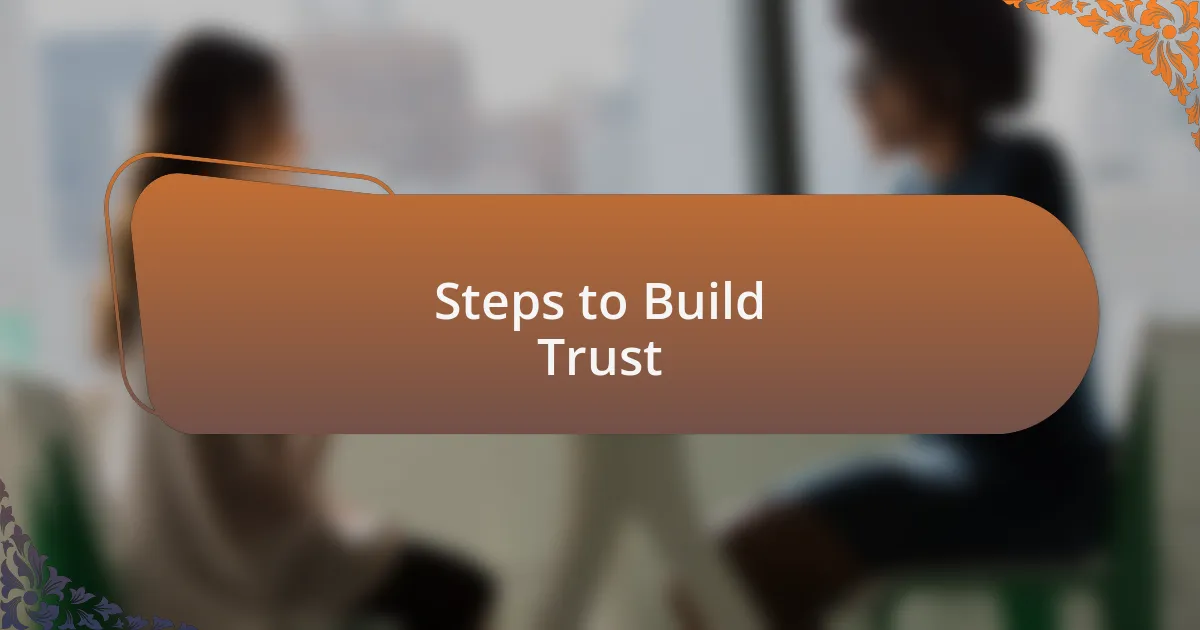
Steps to Build Trust
To build trust, I believe consistency is crucial. I once had a coworker who always showed up on time for our meetings, and this reliability made a significant difference in my willingness to engage with her. It’s in those reliable moments that trust starts to take root; you begin to feel assured that the other person values your time and feelings.
Another essential step is vulnerability. I remember one evening after a stressful day; I opened up to a close friend about my struggles with selective mutism. Sharing that part of myself felt terrifying, but it also deepened our connection. Have you noticed how honesty can sometimes invite others to open up as well? That exchange of vulnerabilities creates a bridge to trust that nurture relationships in ways you might not expect.
Lastly, I find that mutual respect plays a vital role. I once attended a workshop where everyone was encouraged to give feedback, but it was the way the facilitator respected each comment that struck me. Rather than dismissing opinions, he embraced different viewpoints and fostered an atmosphere of collaboration. This experience taught me that respect is a two-way street; when people feel heard and valued, trust begins to flourish.
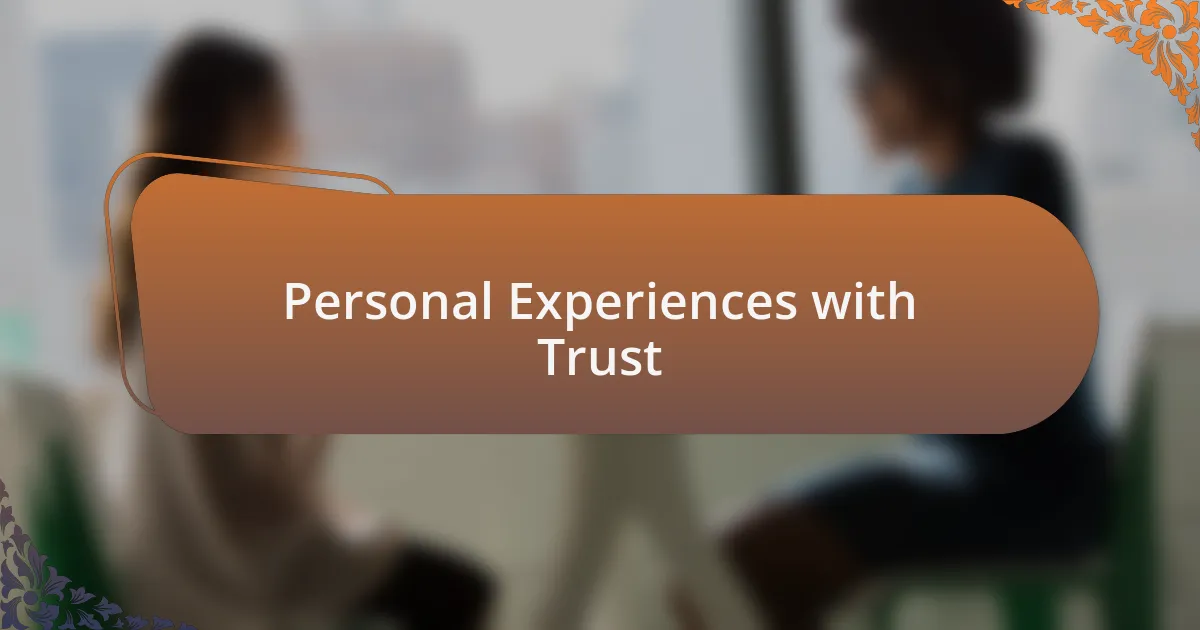
Personal Experiences with Trust
Trust is an intricate dance, and each step can feel vulnerable. I remember a time when I hesitated to share my thoughts during group discussions. The fear of judgment loomed large, yet I chose to share a personal story about my experiences with selective mutism. The support and understanding from my peers not only surprised me, but created a safe space where I felt valued. Have you ever had a moment where sharing something personal changed how you relate to others?
Building trust also involves celebrating small victories. I distinctly recall a day when a friend invited me out, knowing my social struggles. I was apprehensive but decided to go. When I communicated my needs, like taking breaks during our outing, my friend honored that boundary with respect. This showed me that trust is not just about deep conversations; it’s also about understanding and accommodating each other’s comfort levels.
Interestingly, I’ve learned that trust sometimes requires giving others the benefit of the doubt. There was an instance when a colleague misinterpreted my silence as disinterest. Instead of getting defensive, I chose to clarify my feelings, sharing my selective mutism journey with them. This act not only resolved the misunderstanding but also paved the way for a stronger connection. Have you had an experience where a little communication shifted someone’s perception?
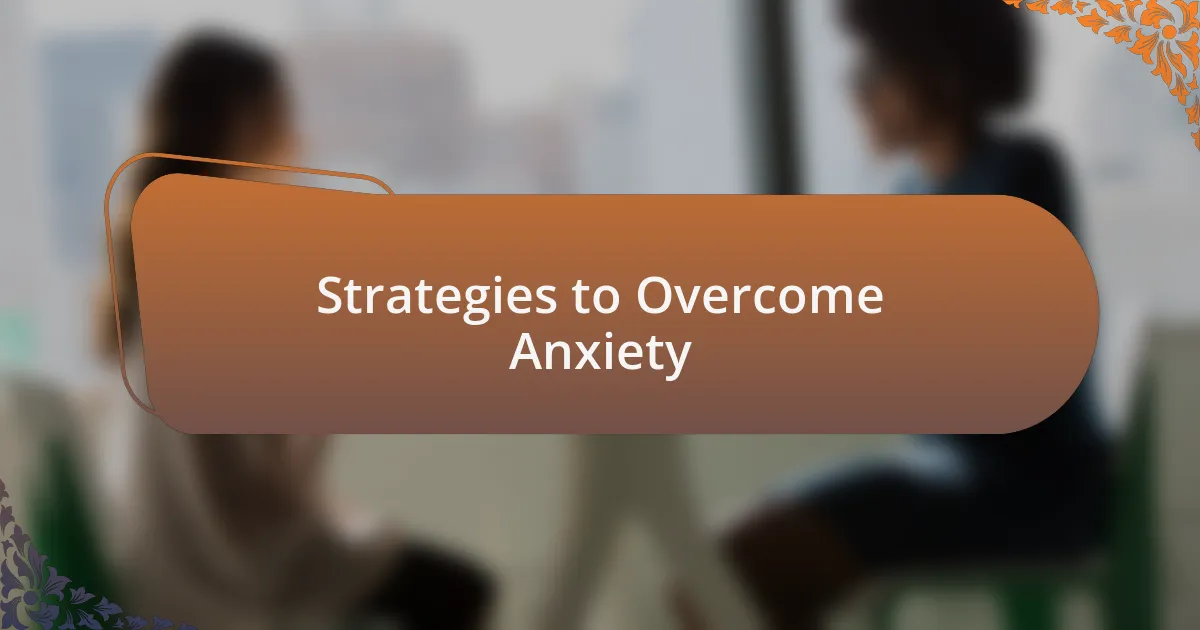
Strategies to Overcome Anxiety
Finding effective strategies to overcome anxiety can significantly enhance the trust we build with others. One method that worked wonders for me was practicing mindfulness techniques. I recall sitting quietly in my room, focusing on my breath, which allowed me to center my thoughts before daunting social situations. Have you ever noticed how just a few minutes of deep breathing can shift your mindset? It’s transformative.
Another approach that I found helpful was gradually exposing myself to social interactions. I started with small gatherings, like inviting a couple of friends over for coffee. I remember how nerve-wracking it felt at first, but as the conversations flowed and laughter filled the room, I began to feel a sense of belonging. By taking these baby steps, I learned that stepping outside my comfort zone didn’t have to be overwhelming—just manageable. Have you tried tackling anxiety one small step at a time?
Lastly, I found that journaling served as an excellent outlet for my anxious thoughts. Writing down my fears and worries helped to clarify what I was truly feeling, making them seem less daunting. I vividly recall a night when I penned my thoughts before an important event, and it felt like lifting a weight off my shoulders. How do you process your emotions when anxiety creeps in? Finding the right channel can make all the difference.
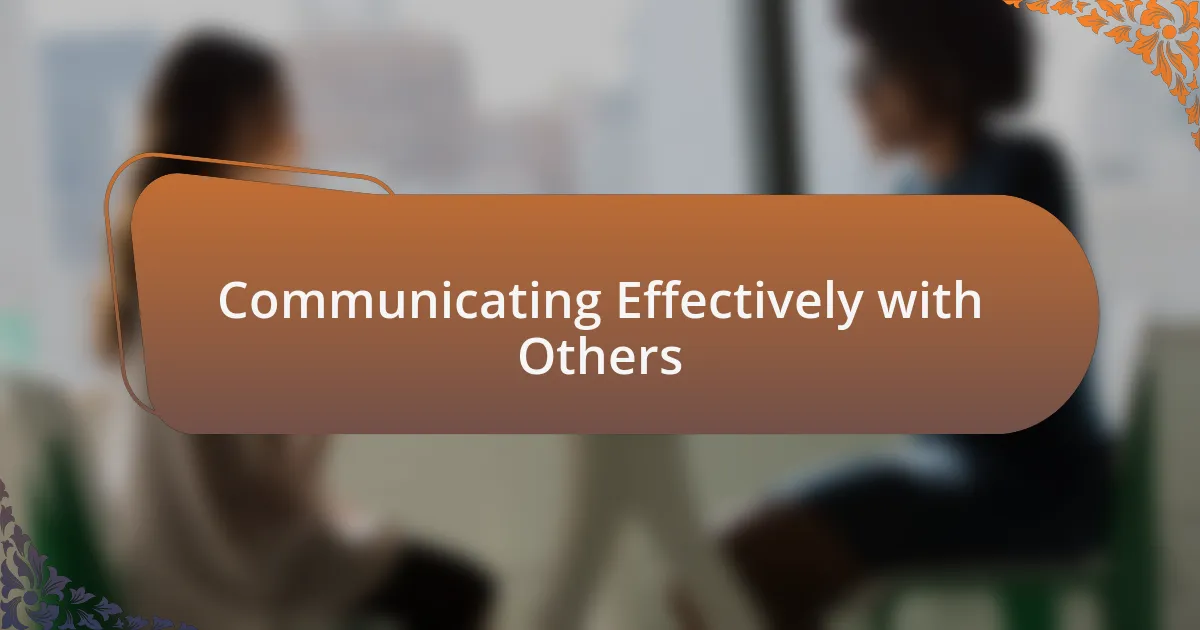
Communicating Effectively with Others
Communicating effectively with others can be a game changer, especially for someone like me who has navigated the complexities of selective mutism. I recall a moment when I tried to express myself in a group setting. To make my intentions clear, I focused on non-verbal cues, like nodding or maintaining eye contact, which surprisingly made the participants more receptive. It’s remarkable how gestures can bridge the gap when words feel challenging, don’t you think?
One tactic that I found particularly beneficial was being intentional about how I framed my questions. Instead of asking open-ended questions that sometimes left me feeling exposed, I learned to ask more specific questions. I remember asking a colleague, “What part of the project excited you the most?” This not only sparked a dynamic discussion but also allowed me to engage in a way that felt safe. Have you ever noticed how targeted questions can ease conversation?
Listening actively is another cornerstone of effective communication. I often find that when I genuinely focus on what others are saying, I connect with them in ways I hadn’t expected. I can vividly remember a conversation with a friend where I put aside my own anxieties to truly absorb her thoughts. The more present I was, the more trust we built. How much do you think active listening can influence your relationships? It’s not just about speaking; it’s about creating a space for others to feel heard.
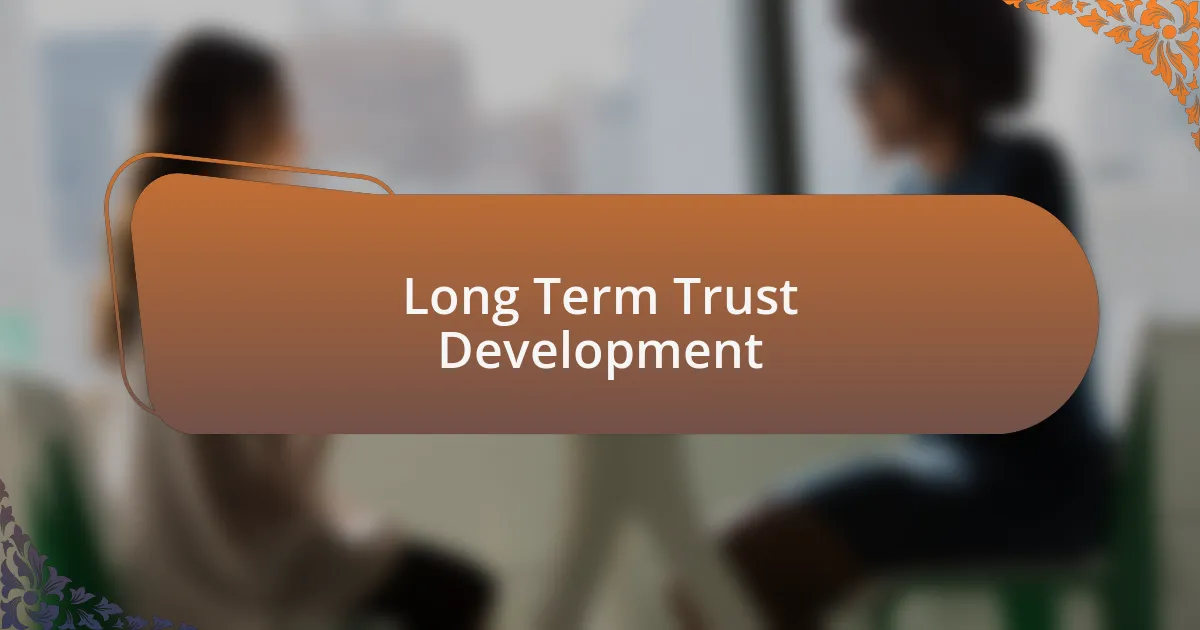
Long Term Trust Development
Building long-term trust requires consistent effort over time, and I’ve learned that showing vulnerability can play a vital role in this process. I remember once sharing a deeply personal story about my struggles with selective mutism during a gathering. As I opened up, I noticed a palpable change in the room; people leaned in, listened intently, and began to share their own experiences. Isn’t it fascinating how honesty can foster connection?
Maintaining regular communication is another cornerstone for developing trust. I found that when I kept the lines of dialogue open, even through simple check-ins, it reinforced my relationships. For example, a quick message to a friend just to ask how their day was made them feel valued and also reminded me that trust wasn’t a one-time effort but a continuous journey. How often do you prioritize these small gestures in your relationships?
Moreover, trust deepens with shared experiences. Participating in activities together allows others to see different facets of who I am. I recall joining a small book club where we not only discussed literature but also shared parts of our lives. The more we engaged in these shared moments, the more secure I felt in our connections. Have you considered how your shared experiences can shape trust over time? It certainly has in my own life.